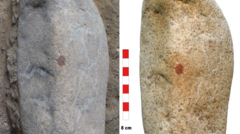A recent study highlights the history between bedbugs and humans, showing that these insects adapted to human habitation 13,000 years ago, evolving from bats to become a persistent urban nuisance that relies solely on human hosts.
Bedbugs: Humanity's Unwelcome Companion for Thousands of Years

Bedbugs: Humanity's Unwelcome Companion for Thousands of Years
New research reveals that bedbugs have shared a long-standing relationship with humans, dating back 245,000 years, marking them as one of the earliest urban pests.
The relationship between bedbugs and humans is unlike any romance – one where affection is hardly mutual. Recent research suggests that bedbugs, specifically the species Cimex lectularius, began their partnership with humans around 245,000 years ago, when they transitioned from feeding on bats to enjoying the blood of early humans. This pivotal shift is believed to have occurred when a Neanderthal or another primitive human shared the habitation space of cave-dwelling bats.
Professor Warren Booth, a leader in urban entomology from Virginia Tech, underscores that bedbugs are exclusive to humans, relying heavily on human presence for their proliferation. "You’re not going to find a bedbug in your garden," he asserts, noting their complete dependence on human hosts for survival.
The study indicates that as early humans shifted from nomadic living to establishing permanent settlements about 13,000 years ago, bedbug populations began to grow significantly. This shift marked the start of a thriving relationship, where bedbugs adapted to living in close quarters with humans, even though they do not transmit diseases or cause serious health issues beyond minor skin irritations.
While the findings establish bedbugs as one of the world's oldest urban pests, it also sheds light on the complexities of coexistence between humans and these bloodsucking insects, a relationship both enduring and unwelcome.






















